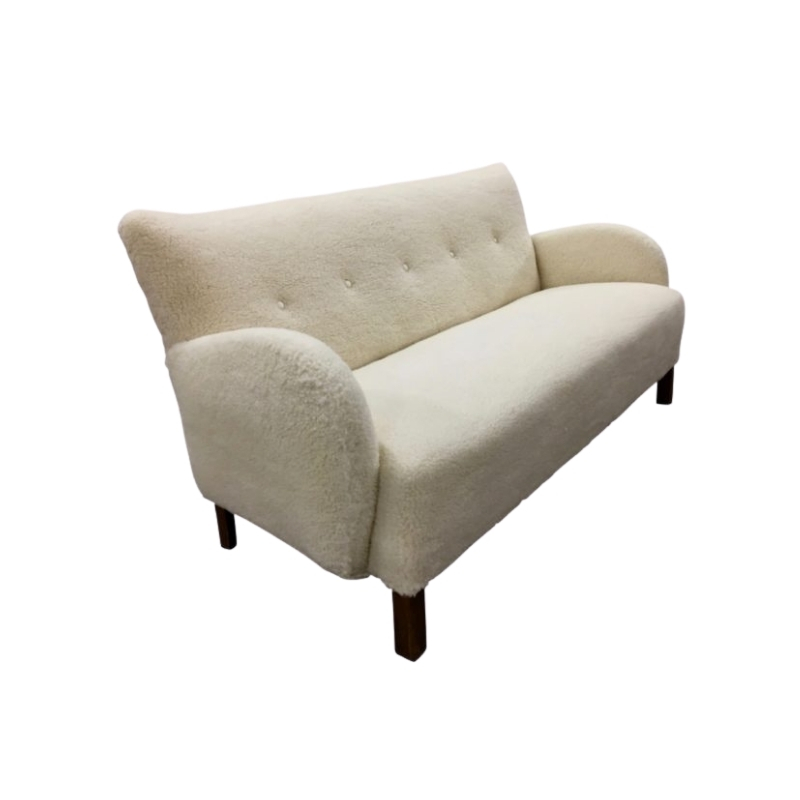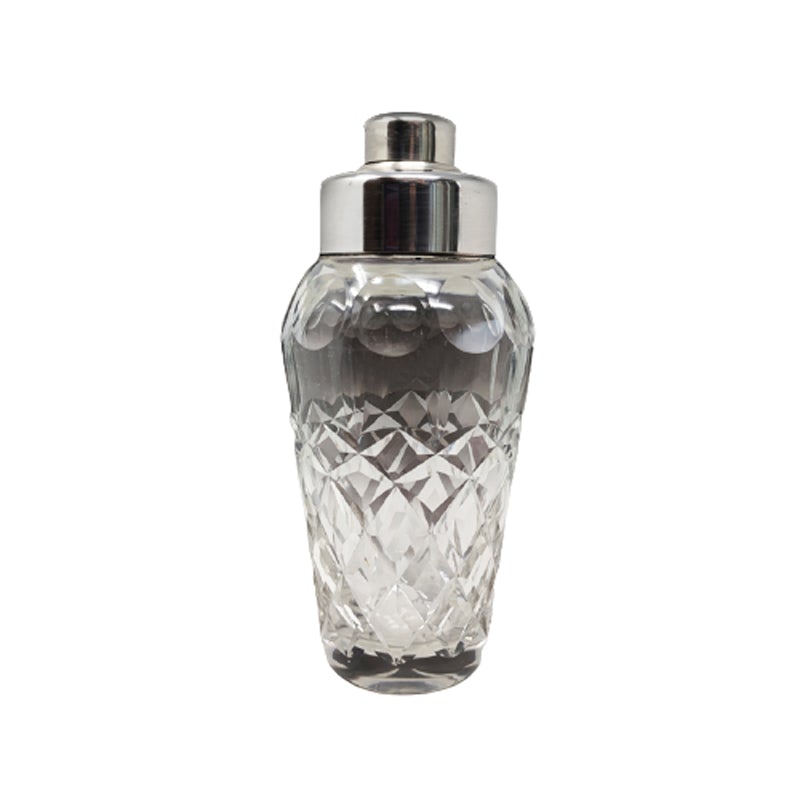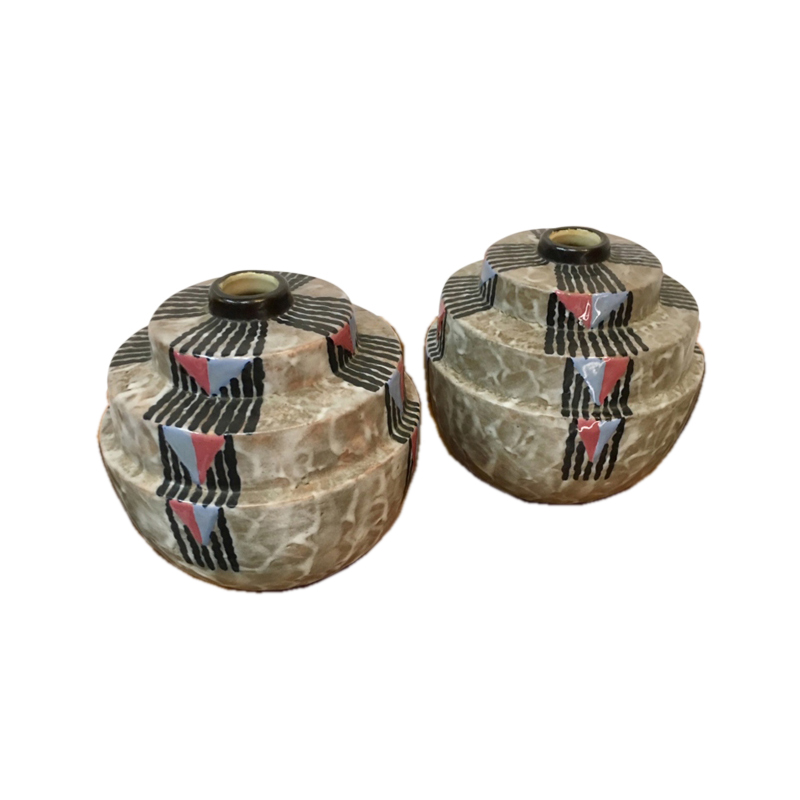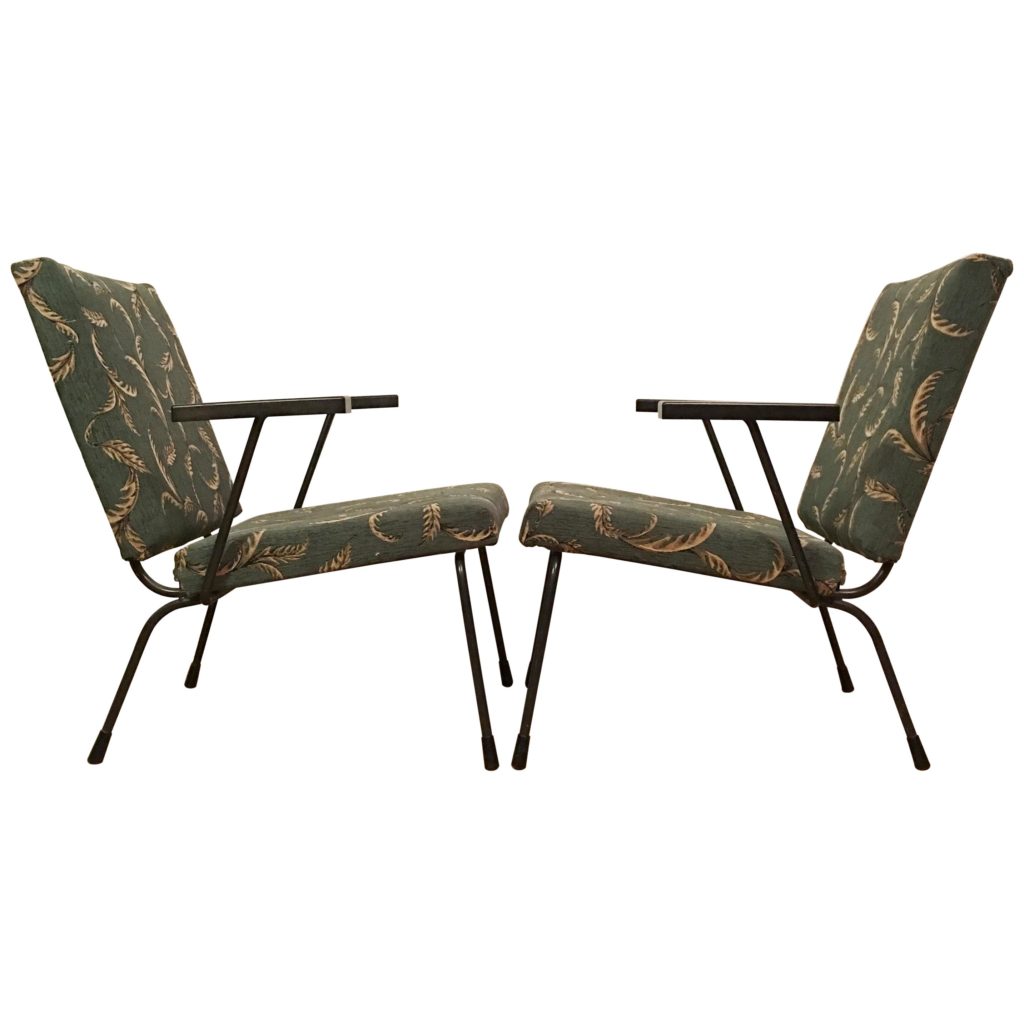Finch, yes
Finch asks if the knock-offs have an effect on the auth'd products. I say yes for several reasons.
a) Most importanly - marketplace confusion. When a place like PGmod starts blurring the lines about the authenticity of their pieces it creates confusion to those people who are approaching the authentic brand for the first time. It also creates confusion in those people who unknowingly purchase a knock-off. If the copy on PG's website reads similar to an auth'd distributor - but the cost is much less- an unknowing consumer may think they're getting a deal. In fact they're getting totally ripped off. When you approach +1k for furniture you're generally investing in something that will offer you returns over many many years. The purpose of buying a licensed product is that it will retain and grow it's value over the course of its existence. Case in point: an authd Eames lounge chair always costs far more (even in lousy condition) than a plycraft knock-off. As it should - the level of quality and craft on the chairs is very very different. That quality and craft is also part of the authd products branding. LRF relates that he bumped into a cheap knockoff. Imagine someone encountering that chair who DOESNT know it's a knock-off. Their perception of the authd production is now skewed.
b) Cost. When knock-offs are introduced they skim off a percentage of sales of authentic pieces. This means the licenced dealers are losing sales, which means the price of the auth'd piece will go UP - making it less accessible.
c)Honesty and integrity. Turbo offers that people aren't brand conscious about furniture. I argue the opposite - especially when it comes to MCM. Current classics like the Egg & Swan chair, the Eames Management, Eames lounger, Barcelona, nelson bench & clocks, LC Comfort chairs & LC Chaise, Saarinen tables and chairs appear as the defining backdrop of what modern means today. They are ingrained in media & the cultural lexicon. The unique shapes of these pieces of furniture may well substitute an actual brand label, that is, the form IS the label. So when someone goes for a womb chair they are going for that shape because that is perceived as comfortable, modern, quality - whatever. The form of these pieces defines their perception. Selling knock-offs brings down the cachet that Knoll, HM, Fritz Hansen, Vitra etc have worked hard to build and define and keep relevant.
I've made friends with the manager of the DWR in town. Their store is litteraly nextdoor to a 'contemporary' store that sells copies of popular MCM pieces. Every day, my friend relates, people demand to know why the price tags are different. Everyday he explains that while the forms may look similar, the materials, craftsmanship, quality, and projected value are very different. The fact that people dont ask about those things reinforces the argument that form and look are equal in the branding of MCM furniture as the manufacturing label.
In addition
In addition to the damage done to the authd producers and retailers, knock-offs continue to undermine economic development and dampen innovation. Some bullet points from the US Patent Office's StopFakes.gov:
- According to the US Chamber of Commerce the US loses $250 billion each year to piracy, conterfeit and intellectual property theft.
- Also lost are up 750,000 JOBS per year.
- $600 billion dollars of counterfeit goods flooded the market in 2007.
- The US loses $2.5 - $3.8 billion US loses to china, per year - solely on pirated and counterfiet goods.
Thats the wallet info, not to mention the human rights issues and violations that arise in the production of knock-off furntiture - as has also been argued on this forum.
http://www.uspto.gov/smallbusiness/
I know I'm repeating myself, but
as a rule of thumb, no one should ever buy a knockoff of a currently made product, if they can help it. My only exception to that is with the Nelson clocks, which in my case, I wanted them for wall art and was not willing to pay for the higher priced Vitra reissues. If it was between a current Howard Miller clock vs. the knockoffs, I might feel differently.
When it comes to furniture, though, you're not only buying a look, but QUALITY AND USABILITY and I wouldn't plunk down my money for a knockoff made of questionable materials.
Other than my handful of Nelson clocks, the only other knockoffs I own is a fairly good quality Wassily chair in black leather and black crinkle-finished framing and a Eileen Gray metal and glass round side table. I got the Wassily for $200.00 locally, at the beginning my search for better furniture and when i figured out it was a knockoff, I thought I might as well get the Gray table!
All my other stuff are the real McCoys.
If I was in the market for a Womb chair or an Eames Lounge chair, I wouldn't even consider a knockoff, no matter how cheap it was.
part one
((Finch asks if the knock-offs have an effect on the auth'd products. I say yes for several reasons.
a) Most importanly - marketplace confusion. ))
I say caveat emptor. The onus is and has always been on the buyer, and if we don't do our homework, then we get what we pay for. My problem isn't buyer confusion, it's buyer negligence. People who don't care. I'm going to go out on a limb here and suggest that most people who get into a certain style of furniture are not people who stumble onto it in a storefront, and buy it in a whim. They're bookish about this sort of thing. They're into it to some degree. They know what they're doing, so I don't cry too many tears for them.
((b) Cost. When knock-offs are introduced they skim off a percentage of sales of authentic pieces. This means the licenced dealers are losing sales, which means the price of the auth'd piece will go UP - making it less accessible.))
You could also look at this as a way of keeping the licensed vendor's feet (or at the very least, their toes) on the ground when it comes to pricing. For example, most buyers wouldn't feel better knowing that 7% of their $8000 sofa went to the actual material/labor/advertising of a product, while the other 93% went to the licensee's yacht payment -- all for the sake of loyalty. And if the quantifiable differences between licensed and non-licensed products are marginal, (which in some instances, they probably are, not to mention the cases where the unlicensed versions trump the licensed versions), to what then does a buyer owe his loyalty? It's a fair question, at least in some cases.
and two
((c)Honesty and integrity. Turbo offers that people aren't brand conscious about furniture. I argue the opposite - especially when it comes to MCM. Current classics like the Egg & Swan chair, the Eames Management, Eames lounger, Barcelona, nelson bench & clocks, The unique shapes of these pieces of furniture may well substitute an actual brand label, that is, the form IS the label. So when someone goes for a womb chair they are going for that shape because that is perceived as comfortable, modern, quality - whatever. The form of these pieces defines their perception. Selling knock-offs brings own the cachet that Knoll, HM, Fritz Hansen, Vitra etc have worked hard to build and define and keep relevant.))
Until it shows up in the Burger King lobby. Then apparently all bets are off!
((I've made friends with the manager of the DWR. Every day, my friend relates, people demand to know why the price tags are different. Everyday he explains that while the forms may look similar, the materials, craftsmanship, quality, and projected value are very different.))
These are the distinguishing variables that matter to me more so than a badge, unless I know for certain that that badge truly MEANS the difference. As for resale value, this is another relative issue. The public is fickle.
((The fact that people dont ask about those things reinforces the argument that form and look are equal in the branding of MCM furniture as the manufacturing label.))
Again, anyone who doesn't ask, or doesn't already know, is likely part of the smash 'n' grab school who don't care anyway. I'd venture to say that these folks are probably being polite by listening to the differences between legit and pirated versions, but are not compelled by the arguments.
And again, that badge needs to mean something. Is Knoll and Vitra, and Fritz Hansen the same company they were when they first started putting this stuff out? Same level of quality control and integrity as in the beginning? Another fair question.
Lucifier...you're right
there's no apparently legal Eileen Gray table. When i was in the DWR here in Minneapolis, even the sales person said that their Eileen Gray table was a knockoff!
It sure looks exactly like mine, and I paid $100.00 for mine and it apprives in its original box.
Finch, nuance
While I don't disagree with the majority of your arguments, I would like to interject some nuance if I may.
Caveat Emptor: a common argument used by many a shady salesman. I agree with it in many instances -take buying a car: I would do my homework on the various pros and cons of each make and model. However, I would inherently trust that if I went to a BMW dealership they would be selling me a REAL BMW. Not the case in Knockoff Land, where sellers do all thats in their powers to effectively bait and switch, even going so far as to use pirated photos of authentic pieces. As a buyer, if I see the same photo on Highbrow's website that I see on PGmodern am I not to assume its the same product?
Cost: Marketplace and manufacturing determine cost. Herman Miller has to spend X amount to produce the chair under certain material, labor, and locational conditions. It makes sense that a little wirebased table made in the US costs more than a knock-off wire based table made in China. As familiar as I am with manufacturing processes and labor costs I truly reject that the profit goes to licensee extravaganzas. Nobody faults Herman Miller for making a profit, but the truth remains that the Eames Lounge chair (accounting for inflation) cost the same today as it did in 1957.
Burger King: I was against the idea of Fritz Hansen selling to McDonalds when I first heard about it and am relieved that the deal didnt work out. I think branding is a combination of style and performance - which addresses your issues of manufacture and materials. I've found few knockoffs that come anywhere near comparison to authentic pieces. The branding that HM, Knoll, Fritz etc engage in stands up under most scrutiny. There will always be the odd pieces out - the Nelson clocks, for example, where the price exceeds even the best mftg costs. Those, as have been argued elsewhere, come down to loyalty. Again, to use the car metaphor - with a little bit of research I know BMW will make a solid product, I dont have to do extensive comparisons - the quality IS the brand.
Smash n Grab group: Again, I dont think you need to be a car aficianado to appreciate that BMW makes a good product. Clearly some people will buy it for status, but that status rests again on the quality the brand has become known for. If you want a high end good you shouldnt be penalized because a knock-off agent engages in underhanded, vauge, or downright dishonest practices.
Case in point - as Barry points out - DWR was up front about the Eileen Gray table. And on that note I stand corrected about the MFG rights - it appears that ARAM was granted licence in 1975.
Lucifersum -- I blame...
Lucifersum -- I blame brevity for my apparent lack of nuance. Just trying to keep the wordcount down...
First off, you care, and that makes you very likable. There's something in what you say, and I won't say I disagree with all or even most of it, but I will venture that I am less enthralled than you are. I am a skeptic by nature, and try to be objective about these things. That said, I challenge anybody to quantify/itemize for me the nuances that make the licensed reproductions so much more expensive than some of the high quality unlicensed reproductions (Alphaville - Modernica). Make no mistake, the Nelson clocks are not the only extravagantly overpriced examples; there is a tremendous markup on most of this stuff from base costs alone. Example: I once paid 1200 dollars for a whole hide from Spinneybeck, a favored vendor of Knoll and others, only to see it a year later being sold (at profit) by a popular leather house, for a little over seventy dollars, and it was not a second, and it was not out of production.
As far as certain labels being keepers of the torch, let's look at Fritz Hansen: I will say that they have not remained as devoted to the details of many of the designs that they have taken under their wing. I won't go into the shortlist...
The BMW analogy is a straw man argument, and I don't think its accurate. I never stated that you had to be an aficionado about the furniture you invest in or be damned...a modicum of research is necessary for any investment. Caveat Emptor, strictly speaking, is a doctrine based upon self preservation, not an argument or a blank check for vendor indiscretion. Unless there is a warranty or guarantees expressed or implied, it is the default position, and always has been, for an investor to know his stuff. You gotta do your homework before you spend that bread! Be it restaurant reviews, movie reviews, furniture, cars, et al. And I maintain that those who don't, largely are the ones who do not care. And I resent them.
I'm likeable? Who knew?
Clearly you dont know me very well. 😉 I like you too - you present a well reasoned, challenging argument. Lets continue! 🙂
I like Fritz Hansen and I'd say they've done a pretty spectacular job with the designs that I know first hand: Series 7, Swan, & Egg.
BMW: You stated that most people appreciative of MCM dont fall into it. I disagree. Everyone needs a starting point. Sure, MCM people seem a little zealous at times- but that is acquired. The secondary BMW reference was about authenticity of branding - whether a knockoff is lesser/better quality than an authentic piece is irrelevant if that knockoff is (as it usually is) being presented as authentic. The authentic piece is a starting point to judge knockoffs -either lesser or better quality. Modernica makes the shell chairs in fiberglass still - to some that is a better material than the polypropelene.
As to your Spinneybeck example, I see that as an anomoly. I cant get seconds of crappy automotive leather for less than $100/hide. Quality bookbinding leathers (given a similar treatment as Spinneybecks) are 2-500$ a hide (goat -a lot smaller than a cow!)
As to the nuance and quality of licensed items I stand by previous arguments: quality of craft, living wage, quality of materials, enviromental impact, funds being directed back to foundations. I come from a long line of artist/craftspeople - I know what labor & materials cost. A swan chair is 500 stitches- by hand, a barcelona chair is stitched and tufted - by hand. These are not small or inexpensive feats. A company like Alphaville is going to clear these hurdles by moving production to China, under bad (at best) production conditions, pollution, & human rights issues. All of that gets wrapped up into the final cost of an auth'd piece. (Modernica is again, an anomoly) I've linked below to my favorite knock-off photostream in flickr - including a production shot in China. Looks fun.
Overall my feeling is that anyone willing to drop some coin should do a little research - but they should be able to do so in an environment less cluttered with half-truths, misdirection, and downright lying.
http://flickr.com/photos/bitbiz/sets/1446281/
((As to your Spinneybeck...
((As to your Spinneybeck example, I see that as an anomoly.))
I really wish it were...this has happened a little too often for me not to feel a little embarrassed/upset for spending what I did.
((As to the nuance and quality of licensed items I stand by previous arguments: quality of craft, living wage, quality of materials, enviromental impact, funds being directed back to foundations. I come from a long line of artist/craftspeople - I know what labor & materials cost. A swan chair is 500 stitches- by hand, a barcelona chair is stitched and tufted - by hand. These are not small or inexpensive feats. ))
Not for you or me, but if that's all you do? If that is your main thing, it's maybe not as special. I'm only trying to keep some perspective here. It's no mean feat, agreed, but not as crazy as someone on the sidelines.
That said, I am for a living wage and craftsmen being paid well for the pride they take in their toil, and the preservation of quality control and legacy. I'm almost a bit of a protectionist on the subject. Just like to see both sides of everything.
((A company like Alphaville is going to clear these hurdles by moving production to China, under bad (at best) production conditions, pollution, & human rights issues. All of that gets wrapped up into the final cost of an auth'd piece. (Modernica is again, an anomoly) I've linked below to my favorite knock-off photostream in flickr - including a production shot in China. Looks fun.))
I wouldn't by shoelaces made in China. I guess I spoke out of turn referencing Alphaville, as I thought they were one of the purely Italian based manufacturers. Must have been thinking of another company. Apologies. However, Modernica, even if it is an anomaly, nevertheless begs the question of quantifiability with regard to price vs. production cost, and the sizable disparity between them and other license holders.
((Overall my feeling is that anyone willing to drop some coin should do a little research - but they should be able to do so in an environment less cluttered with half-truths, misdirection, and downright lying.))
Well...maybe they should, but, so is the odyssey of life. Truly. Large print giveth, etc. This almost boils down to good vs. evil, or life isn't fair type themes. It's also what keeps life interesting. Being duped is sometimes the best way for folks to learn, also known as the hard way.
All said, fine and illuminating points on your behalf.
Smash n Grab
Not litterally Barry! Not that it wouldnt be fun to do a shopping spree. I think Finch and I are using smash n grab as a descriptor of the folks who see "design" as a commodity. They dont know WHY they like it, only that its expensive and 'prestigious', rather than those of us who know the the how, and the why, and the WOW of good designs.
Modernica. Weird thing to talk about. Here's my take - they have nailed the quality because they were given an opportunity to work as a licensee under Herman Miller. They had access to all of the original design specs, machinery and tooling necessary to create actual authentic pieces that would have been quality-worthy of the license. Then something happened and things went south between them and Herman Miller and HM moved production of the shell chairs to Vitra and the ESU's to HM. Would I buy from Modernica? I do love the hot pink fiberglass...
My only complaint with Modernica is that their salespeople were dumb as dirt last time I popped into the SoHo store. The girl repeatedly described the 'transluscent' colors as 'iridescent' and had NO idea about the history of the chairs. "Yeah they're really funky and retro huh?"
If you need any help, please contact us at – info@designaddict.com









